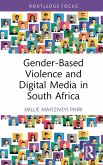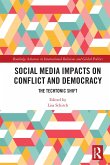This book examines contexts, practices, and activism on issues of gender violence at the intersections of online and public spaces. Through individual case studies, the volume considers the interplay between the virtual worlds of online spaces including social media, physical spaces and bodies, and the ways in which offline and online dimensions of experience can serve as motivators for, extensions of, or limitations to each other.
Examining both problems and potential solutions, chapters explore the impacts of, and potential resistance to, the intersections of gender violence, social media, and our complex lived environments across national boundaries. Throughout the volume, close attention is paid to the difficult issues highlighted when prior conceptions of basic foundations such as public space, individual rights, and professional responsibility are confronted by new examples that further trouble the boundaries of long-held frameworks of legal, social, professional understanding, and even our comprehension of the "real." Each chapter grapples with a difficult reality related to gender violence, underscores possible ways forward, and highlights limitations, resisting easy answers to complex and persistent questions about rights, personal integrity, and social responsibility.
Offering clear insights into a critical issue, this book will be of interest to scholars and students in the areas of media studies, social media, gender and women's studies, sociology and criminology, digital humanities, and politics.
Examining both problems and potential solutions, chapters explore the impacts of, and potential resistance to, the intersections of gender violence, social media, and our complex lived environments across national boundaries. Throughout the volume, close attention is paid to the difficult issues highlighted when prior conceptions of basic foundations such as public space, individual rights, and professional responsibility are confronted by new examples that further trouble the boundaries of long-held frameworks of legal, social, professional understanding, and even our comprehension of the "real." Each chapter grapples with a difficult reality related to gender violence, underscores possible ways forward, and highlights limitations, resisting easy answers to complex and persistent questions about rights, personal integrity, and social responsibility.
Offering clear insights into a critical issue, this book will be of interest to scholars and students in the areas of media studies, social media, gender and women's studies, sociology and criminology, digital humanities, and politics.








